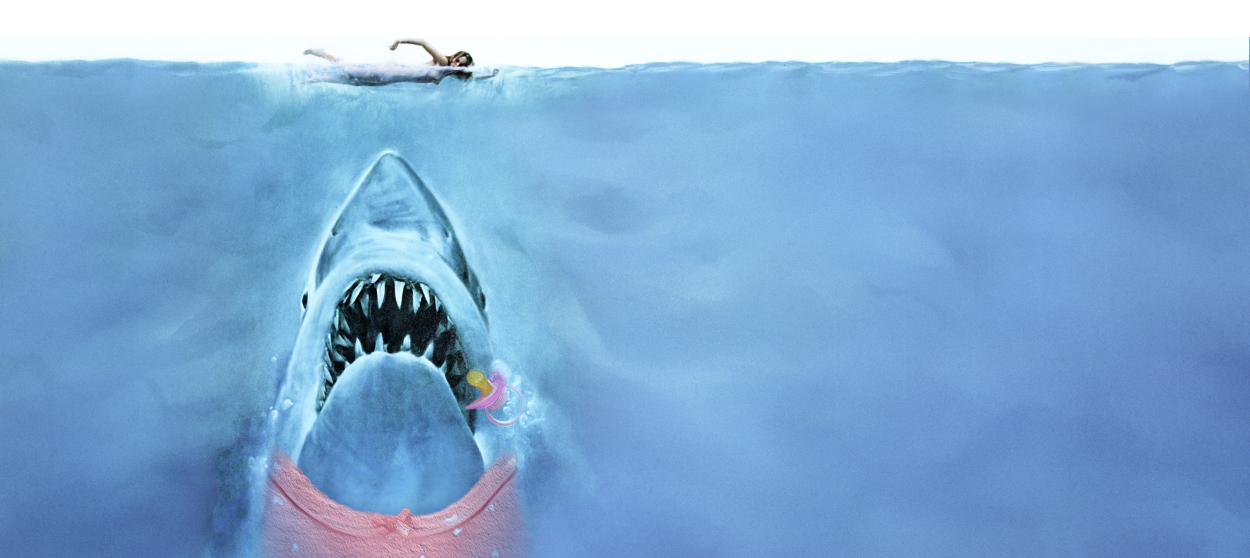'Baby Shark' was once wildly inappropriate for children
An investigation into the gruesome original version of the children's hit


The first time I can remember singing "Baby Shark" was on a mossy wooden stage at Washington State's Camp Seabeck, where a dozen third graders and I hopped around on one foot, miming a swimmer whose leg had been viciously ripped off by a bloodthirsty marine carnivore.
Our "cute," "adorable" dance got more frantic after our dismemberment. "CPR, do-do-do-do-do-do," we urgently sang before we hung our heads and announced to our peers, "It's not working, do-do-do-do-do-do. Now we're dead, do-do-do-do-do-do."
I hadn't thought about the grisly "Baby Shark" song in years, until a Korean educational brand's version of the song exploded among the 0-to-4 crowd at the end of last summer. Suddenly, "Baby Shark" was everywhere, but with one noticeable difference from my childhood — no one was being eaten by the titular baby shark.
The Week
Escape your echo chamber. Get the facts behind the news, plus analysis from multiple perspectives.

Sign up for The Week's Free Newsletters
From our morning news briefing to a weekly Good News Newsletter, get the best of The Week delivered directly to your inbox.
From our morning news briefing to a weekly Good News Newsletter, get the best of The Week delivered directly to your inbox.
What happened?
Let's start from the beginning. What is "Baby Shark"?
Google defines a baby shark as a comparatively small or immature member of a family of marine fish that possess a cartilaginous skeleton, a prominent dorsal fin, and tooth-like scales. But that's not what we're interested in. We're interested in this:

Cute! Not scary! What gives?
A free daily email with the biggest news stories of the day – and the best features from TheWeek.com
"Baby Shark" is a children's song in which participants list the members of a fictional shark's family, beginning with the titular infantile squaloid and progressing through the "momma," "daddy," "grandma" and "grandpa" sharks. Despite originating as a rather upsetting camp activity, South Korea's "Pinkfong" cleaned up the lyrics and put out a bopping version of the song, seemingly with the express purpose of torturing parents. The song blew up stateside around the end of the summer in 2018.
In an interview with The Washington Post, several parents who are now forced to listen to "Baby Shark" on infinite loop also recalled the bloodier version of the song from summer camp. "I thought it was so funny that we were singing this dark song to little kids," said Joana Munson, the mother of a 2-year-old.
The "Baby Shark" Dance, or How I Learned to Love Losing a Limb
In both versions of "Baby Shark," dancers begin the song by miming each of the sharks they are describing with their hands and arms. (The Baby Shark is represented with two fingers opening and closing, the Momma shark with both hands, the Daddy shark with both arms, etc.)
In the modern Pinkfong version, after introducing the sharks, the singers go for a "hunt" (do-do-do-do-do-do) that concludes with them "running away." The specifics are hazy (is it the sharks that are running away? Can a shark really "run"?) but ultimately the prey is "safe at last" (do-do-do-do-do-do) and then the song ends.
Pleasant! Decidedly un-violent! In fact, it's so normal that you can even make it into a nice little Christmas song without too much blood loss.
But there is another side to "Baby Shark." A darker side.
A ... hungrier side.

In this version, singers not only introduce the shark family but also introduce a "swimmer," who gets his or her own dance:
Subsequently, there is a shark attack, which you can improvise anyway you like but should involve lots of screaming and thrashing and perhaps some over-the-head dorsal fin hands, just to indicate precisely how you are being eaten, and by what. You can even add a verse like "swim faster do-do-do-do-do-do," where the poor person tries to get away. Dealer's choice.
Next the performers mime dismemberment by hopping around on one leg. You may also choose to lose an arm or two:
The song gets really grim when there is a last-ditch attempt at reviving the swimmer with CPR. This stage of the song can last quite awhile, depending on how long you want to attempt resuscitation:
At this point, you have a number of options for how to resolve the unfortunate tale. I went to Camp Seabeck with my public, secular school, so our swimmers simply died (sometimes we would also mime falling on the ground and sticking out our tongues — grim!).
Other versions of the song I've investigated are more spiritual, with the swimmer going up to Heaven (do-do-do-do-do-do) where God makes more ... baby sharks (do-do-do-do-do-do).
Why did this song, which is wildly inappropriate for children, make a comeback?
Well, it is ridiculously catchy.
As the great Chinese general Sun Tzu wrote in The Art of War, "If you know the enemy and know yourself, you need not fear the result of a hundred loops of 'Baby Shark.'" The people over at Big Think took this to heart and analyzed exactly what makes "Baby Shark" such an earworm. The short answer? Repetition ... lots of it. "At its heart — it's rhythm — and we like it," Big Think explains. "It can get us excited, and it can be as primally comforting as being rocked back and forth by a loving parent." Jaws this is not.
Great, now "Baby Shark" is stuck in my head and I am terrified I will never, ever get it out.
You won't.
Jeva Lange was the executive editor at TheWeek.com. She formerly served as The Week's deputy editor and culture critic. She is also a contributor to Screen Slate, and her writing has appeared in The New York Daily News, The Awl, Vice, and Gothamist, among other publications. Jeva lives in New York City. Follow her on Twitter.
-
 Political cartoons for January 4
Political cartoons for January 4Cartoons Sunday's political cartoons include a resolution to learn a new language, and new names in Hades and on battleships
-
 The ultimate films of 2025 by genre
The ultimate films of 2025 by genreThe Week Recommends From comedies to thrillers, documentaries to animations, 2025 featured some unforgettable film moments
-
 Political cartoons for January 3
Political cartoons for January 3Cartoons Saturday's political cartoons include citizen journalists, self-reflective AI, and Donald Trump's transparency
